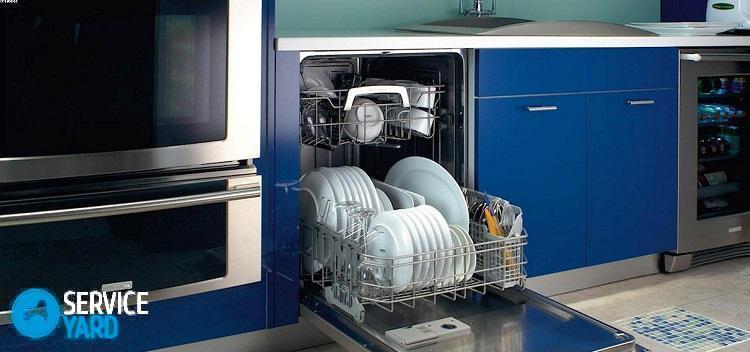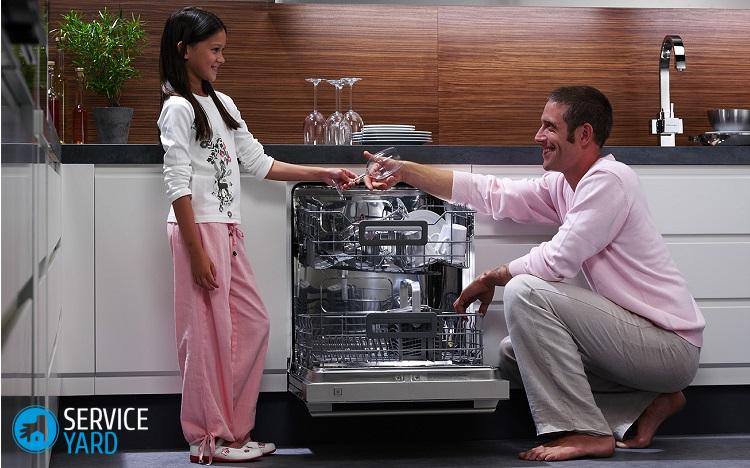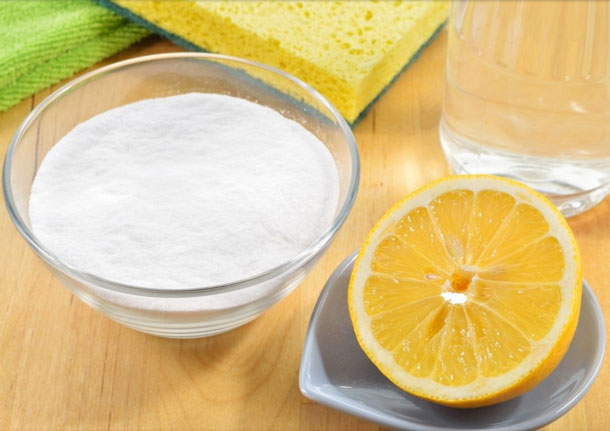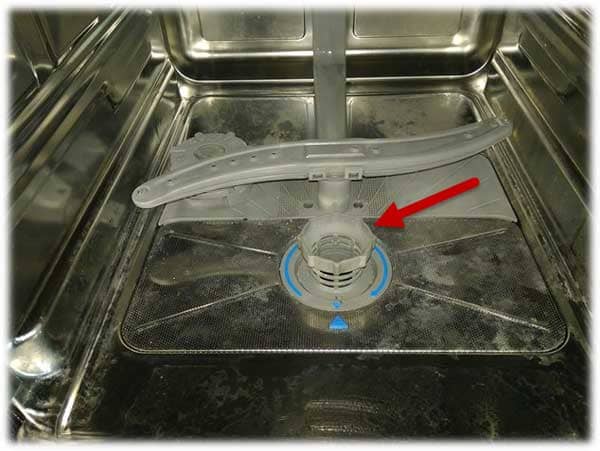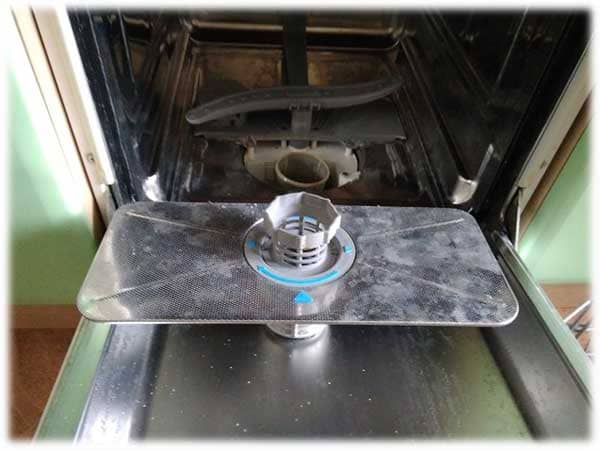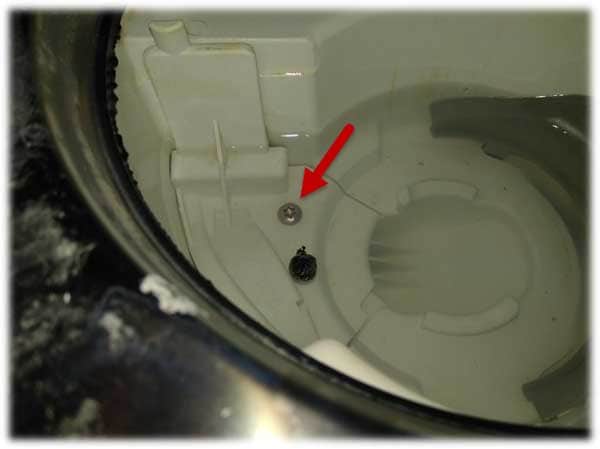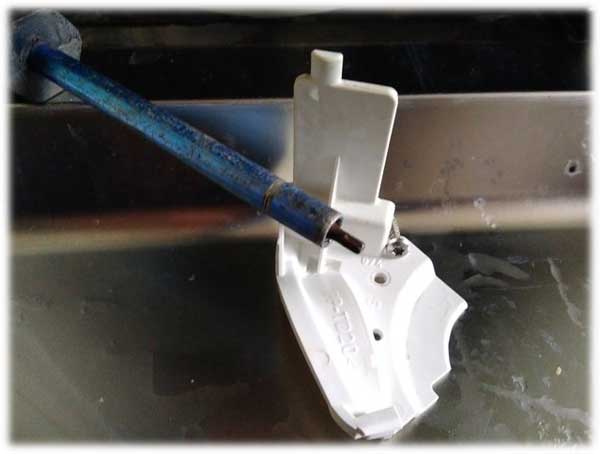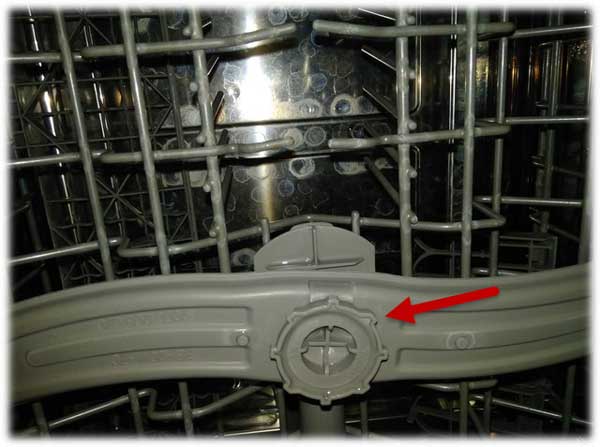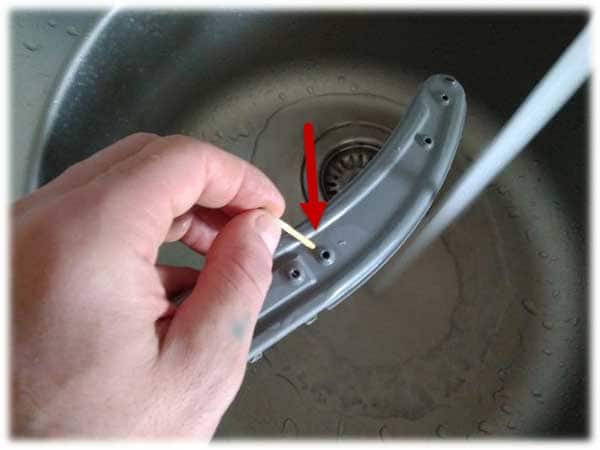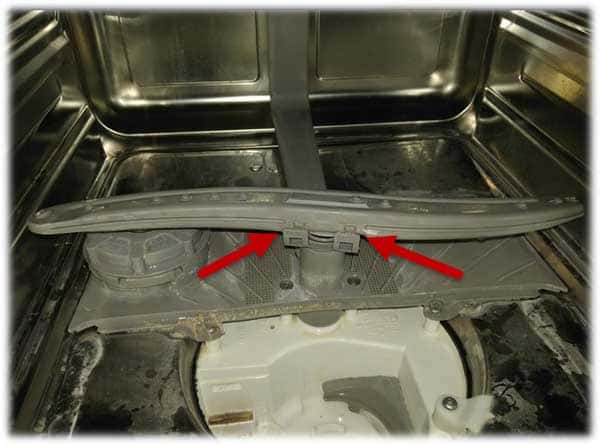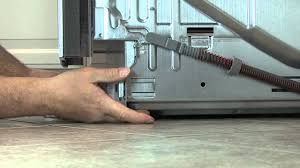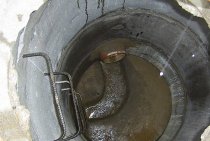Basic rules of care
When using this household appliance, adhere to the following rules:
- To make your dishwasher last longer, check the water inlet hoses more often. Clean them with a toothpick if necessary.
- Dry the rubber gasket in the door once every 2 months.
- Before washing, be sure to clean the dishes from food residues. Try not to overload the car.
- To keep your dishes sparkling clean, choose the right dishwasher detergent. Check if the brightener and salt wells are well filled.
To make cleaning the dishwasher easy and not out of order, please note that the following dishes cannot be washed in it:
- cutlery made of wood (partially or completely), as they lose their presentation, and the glue used in the manufacture of such dishes does not withstand high temperatures;
- decorative glass products that are very sensitive to external influences;
- rare porcelain or antique dishes of special manufacture;
- disposable plastic utensils;
- crystal with particles of lead;
- products made of synthetic materials sensitive to high temperatures;
- copper and pewter utensils;
- stainless steel items;
- applied arts;
- old dishes whose coating is not heat-resistant;
- products with inserts of silver and gold, as when washing, the color may change and the dishes will fade.
How to remove scale, grease and blockages with folk methods
Once a customer came to our electronics store, who bought a dishwasher from us about six months ago. She threw a real scandal with the words that we sold her defective equipment, which so quickly began to function poorly. For you to understand the situation, the dirt has ceased to be completely removed from the dishes.
The lady began to demand the return of money for the goods or payment for the repair of a broken car. Then I had to ask the customer a counter question, how often did you clean such an expensive device, did you use special products, how often did you use them? The answer just pissed me off. She said that she often used tablets to clean dishes and dishwashers.
That is, for six months of operation, the hose, drain or filter has never been cleaned. Then I had to remind the woman once again about the frequency of "hygiene" equipment and talk about an effective folk remedy for scale, which every housewife can find in her kitchen. You can effectively clean scale at home with citric acid. To do this, you need 200-400 grams of acid, which you need to pour into the dishwasher, after which you need to start the normal dishwashing mode. Literally a few days later, the customer came with the words of apology and thanked for the useful advice.
If you don’t want to get into the same awkward situations, then you should be more careful about technology and take note of several folk methods for cleaning the dishwasher from scale, grease and blockage.
- As you already understood, the first remedy is citric acid. It perfectly eliminates scale, drain blockages and greasy growths on important elements. The only rule when using such a “burning” product is to re-wash the device in the usual washing mode in order to completely remove the remnants of the lemon.
- The second option is lemon juice. In order to get rid of fat on the door and elastic bands, it is enough to squeeze the juice of 3 fruits and wipe the indicated elements with it, then wipe them dry.
- Another effective remedy for scale and blockages is vinegar.To clean with vinegar, you will need to pour 400 ml of the product into the bottom of the basket, turn on the unit to heat the water, start the device and stop it at about half the cycle. If the blockage is insignificant, then you can continue the washing process after 30 minutes. If you need to get rid of a more serious blockage, then leave the machine in this state for the night, and finish the cycle in the morning.
- A more risky method is bleach. If the internal parts of your dishwasher are made of stainless steel, then you will have to abandon this product immediately. If not, then know that bleach is a great way to fight mold. To do this, pour 200 ml of the solution into the dishwasher and run a full cycle of washing at high temperature.
Do not forget about the prevention of the occurrence of fatty inclusions, an unpleasant odor, scale. Fairy, Fairy Platinum (soda tablets), Antinakipin or Finish for dishwashers can help you with this.
Remember that the cause of poor performance or breakdown of equipment is often improper care for it. Hopefully, after reading this article, you will begin to take better care of your dishwasher and be able to clean it yourself inexpensively. By the way, do not forget about your other friends from the world of technology, for example. Subscribe to updates, invite your friends and always be the first to know the news of the world of technology.
How to clean parts and clear clogs
To solve sewer problems, you can call a repairman or handle it on your own. For instance:
- clean the contaminated area with a thin wire brush;
- disconnect the siphon and rinse it with water;
- pour a special powder and use a plunger.
What to choose is up to you. You also need to clean the drain hose: under pressure from a tap or mechanically (using a brush).
More time will have to be devoted to internal problems. Consider how to clean the filter from blockage.
Drain filter
Before starting work, disconnect the PMM from the network, turn off the water supply. Proceed like this:
- Open the chamber door.
- Pull out the lower basket for dishes.
- Unscrew the filter and metal mesh from the pan.
- Rinse under the tap. Additionally, you can use a non-rigid brush and a toothpick for especially difficult dirt.
Remove water from the container in the drip tray with a sponge. Remove the pump valve. Pull the cover to the side and then towards you. Additional screws may need to be removed. Check impeller for blockage. If everything is in order, then inspect the pump and its parts.
Drain pump
You need to disassemble the dishwasher to get to the pump. Remove all baskets from the chamber. Pull the machine out into the free space and put it “on its back”. Then do it like this:
Loosen the screws or latches on the bottom cover (bottom).
A float sensor can be attached to the back of the bottom.
Carefully unscrew the mounting bolt and unfasten the wiring.
Having gained access to the circulation block, you will notice that the pump is attached to the side.
Loosen its screw.
Disconnect wiring chips.
Additionally, you can inspect other parts, hoses, pipes.
Spray
Everything is simple here:
- The lower rocker is located near the drain filter.
- Scroll it and remove from the seat. On some models, it may be necessary to press the tabs.
- Rinse the item with water. Additionally, the nozzles are cleaned with a toothpick.
Don't forget to inspect the top atomizer and its openings. Sometimes scale accumulates in the holders to which the sprinkler is attached.
intake filter
The mesh can be cleaned by disconnecting the inlet hose from the PMM body. If the part is clogged with scale, put it for a while in water with the addition of citric acid. The mesh is recommended to be cleaned at least once every six months.
How to clean the filter in the dishwasher if it is clogged
It often happens that dishwasher filters get dirty. This greatly complicates the operation of the device and reduces the quality of washing. If the blockage is not removed in a timely manner, this can lead to damage to the device. Periodic cleaning of the dishwasher filter will help to avoid many problems.
How to clean the filter?
Causes of clogged filter
The main reason is large food residues on the dishes. Before loading the dishes, the plates should be thoroughly cleaned of food residues and be sure to rinse with warm running water.
But even this event will not completely eliminate the possibility of filter clogging, because fat accumulates on it, which does not completely dissolve in water. Detergent residue can also cause clogging. Scale and plaque also leave their mark on the surface of this element.
How to remove the filter
For Bosch or Electrolux household dishwashers, the filters are located in the lower interior of the appliance, above them there are rocker arms for distributing water and a heating element. The Bosch dishwasher device is shown in the photo.
Before removing the filter for cleaning, disconnect the appliance from the mains, then use a sponge or cloth to collect excess water. Only then can the filter itself be removed. By the way, the rest of the parts - water distributors, heating element - should also be cleaned of scale and other contaminants.
It is very easy to understand that the filter is clogged and requires immediate cleaning. The machine starts to work much worse than before. The quality of washing dishes is reduced, the appliance starts to make some kind of noise, water remains at the bottom. All this indicates that it is time to urgently clean the filter.
How to clean the filter
There are several ways to clean the filter in the dishwasher:
- With dishwashing detergent and scouring powder. You can apply them with an old toothbrush, then rinse thoroughly with running water, if necessary, the procedure can be repeated.
- Another effective remedy that will help get rid of fat is baking soda. It can be used along with table salt, which also helps clear oily stains. But it is better to dilute the powder with water and apply the gruel with a dishwashing sponge, then rinse.
- The last way, which will help not only get rid of fat, but also limescale, is citric acid, for this the part should be soaked in a solution for several hours, then washed with soapy water. Vinegar works the same way. If there is no citric acid, it will completely replace it.
It often happens that the filter, which is located on the water supply valve, is clogged. Cleaning it, even if not too often, should not be forgotten.
The water that passes through it daily is not of high quality. It may contain a lot of salts or lime. Sometimes rust particles get out of the pipes.
If the dishwasher filter is not cleaned on time, water will draw much more slowly.
Preventive measures
A few simple rules will help to avoid many problems:
- Remove all food residues from dishes before loading them into the machine. It is advisable to rinse it with warm water to partially wash off the fat.
- To wash dishes, you must use special liquids, powders or tablets; home remedy will not work.
- It is advisable to use special water softeners - this will reduce the accumulation of scale on the heating element and water distributors.
- Remove and wash the filter at least once every two weeks. And once every three months, a general cleaning should be carried out inside the appliance, because dirt and grease accumulate on the entire inner surface of the machine, which causes an unpleasant odor and the formation of fungus.
It is advisable to clean the dishwasher filter and clean the inside of the appliance as often as possible. Everyone can do this on their own.
All these measures significantly extend the life of the equipment and help to avoid the need for costly replacement of some parts and components.
In the video you can see detailed instructions for cleaning the dishwasher filter from blockage.
Getting rid of limescale
When caring for a typewriter, you need to decide not only how to clean it of grease, but also how to get rid of scale.
. The heating elements are inaccessible for direct contact; it is strongly not recommended to disassemble the machine to gain access to them from the inside. Scale can be affected only with the help of chemicals. Means can be both specialized, purchased in a store, and “homemade”, that is, from improvised ingredients.
Professional anti-scale products
To remove scale, acid-based products are used, which, by starting a chemical reaction, destroy plaque on the heating elements.
The most popular dishwasher products are "Fairy" and "Finish"
.
- "Fairy" (or "Fairy Platinum") is available in the form of a gel or tablets with inclusions that prevent the appearance of scale and the spread of rust.
- "Finish" is a gel-like preparation produced in 250 ml vials. The container with the agent must be placed in the dishwasher and run a cycle with a water temperature of 60-70 ° C.
Both products have already received a lot of rave reviews from dishwasher owners.
Many people complain about the poor quality of various tablets: the dishes are not washed, and smudges remain, and the remedy itself remains on plates and cups. But Fairy capsules do just fine: in 40 minutes they perfectly wash simple dishes, pans, and braziers with fat growths.
Irina, 32 years old.
I like Fairy All in 1: they are powder and gel capsules. The white powder is the actual detergent, while the gel is the rinse and water softener. After them, the dishwasher shines, and there is no need for special cleaning.
Sofia, 35 years old.
I have a Bosch dishwasher, which after three years became terrible at washing dishes. I bought Finish and acted according to the instructions: I removed all the dishes, removed the sticker, turned it upside down and put it at the very bottom. The cycle launched as long as possible, with a temperature of 65 degrees. When the cycle ended, the washer smelled nice of lemon, and the dishes are now perfectly washed again!
Nastya, 28 years old.
Remedies for plaque from improvised materials
The price of professional anti-plaque products seems sky-high to some
. Thrifty housewives can resort to home remedies that will effectively help clean the dishwasher.
The choice of a specific cleaning agent is the right of every housewife. The main thing is not to neglect the rules for caring for equipment and not to ignore the symptoms that indicate pollution.
:
- The sound of the pump that has become louder indicates that the filter is dirty.
- Poorly washed dishes indicate the presence of clogging and plaque on the baskets and blades.
- An unpleasant smell, red and black spots on the door are a sign that the fatty coating has reached the secluded corners, the seals are overgrown with dirt, and the machine itself needs to be dried more often.
Grease, dirt and deposits make the dishwasher inefficient. Carefully monitor it, and then the equipment will last a long time.
Attention, only TODAY!
Good afternoon, dear readers. Quite often I have to deal with such a problem as customer complaints regarding malfunctions in dishwashers. Quite often, excited and angry people come to the store in order to return the goods due to the fact that they were allegedly sold a low-quality product, not even realizing that they themselves have become a “stumbling block” for expensive equipment
The reason for this may be improper care, which is why it is so important to know how to clean the dishwasher at home, which will be discussed in today's article.
Folk remedies
Soda
Baking soda removes old stains and eliminates unpleasant odors. It is required to pour soda into the machine tray, then turn it on at the highest temperature for a short time.
Vinegar
Effectively disinfects equipment and removes dirt and grease. To do this: fill the plate with vinegar (preferably distilled, white), place it on the top shelf. Turn on the device at maximum power. After work, leave the door open to eliminate unpleasant odors.
Lemon acid
It will help in the fight against scale. Pour 300 g of acid into the machine and run at full power.
To keep household appliances for the kitchen in working order, you need to know how to clean the dishwasher at home. The answer to the question must be sought in the instruction manual for the device. The manufacturer lists the detergents and cleaners that are allowed. Budget models, unlike automatic ones, are subject to exclusively manual cleaning. At the same time, you need to remember that you should not rely entirely on automation.
During the first month of operation, the inner surface of the device is covered with a layer of fat. If it is not promptly cleaned, then after a few weeks you will need to contact the service center. In most cases, maintenance is carried out using a limited list of substances, the use of which inside the unit will not harm it. Unfortunately, not everyone is in a hurry to get acquainted with it. As a result, the number of equipment failures increases.

The first thing the hostess should remember is that you should not take aggressive chemicals and acids. Even if marked "delicate", the reagent can still damage the inner surface. The second rule concerns the amount of substance used. Jewelry precision is the key to long-term health of the dishwasher.
The following tips will help you avoid many problems during the practical operation phase:
- It is recommended to ventilate the unit after each use - this reduces the rate of formation of body fat;
- The thicker the layer of fat inside, the less you can dry the dishes;
- After the end of sanitary measures, the “insides” of the machine must be dried for at least 40 minutes, otherwise mold will form.
Regularity and consistency is the key to the health of the dishwasher. You can get rid of fat with the help of the recommended list of substances. They are poured into a tank specially designated for this, after which the “cleaning” mode is turned on. The main thing is to quickly remove fat deposits that can harm the mechanical elements of the device.
Prevention how to wash the dishwasher
Sanitary and hygienic procedures will not take much time if you follow some rules
You need to pay attention to the hose responsible for the release of water. Every 2 months it should be cleaned with a soft brush and rinsed
In order not to have to literally tear off all kinds of dirt at the end of the month, it should be inspected before each washing of dishes. The surface is freed from large and not very food residues, otherwise the mechanical parts of the product will quickly fail.

In addition to the above tips, there are a number of other
- Each machine has a weight limit - an indicator that characterizes the ability of the dishwasher to wash a certain amount of dishes. You can not even slightly exceed it.
- Even the most expensive unit will not be able to wash dishes if the wrong cleaning agent is selected. This must be purchased taking into account the characteristics of the dishes themselves, the prevailing types of pollution and the manufacturer's recommendations.
- Before starting work, check the sections for the salt of the substance responsible for the formation of gloss.It is forbidden to turn on the dishwasher if the listed elements are in insufficient quantities.
- The dishwasher must be cleaned regularly. This can be done manually or automatically, depending on the model. For example, Bosch cars, which are in the middle price segment, can be washed by pressing a few keys. The main thing is to choose a substance recommended by the manufacturer for this procedure. It is better to refuse "folk" methods, otherwise you can lose warranty service.
How to avoid problems
By adhering to the operating rules, problems can be prevented. What do we have to do:
- It is good to clean the utensils from food debris.
- Clean your dishwasher regularly.
- Twice a month, clean the drainage filter, once every six months - the bulk filter.
- Remove scale from parts. Use special salt.
- Dry the hopper after the wash cycle.
So you can fix problems with your own hands, as well as prevent their occurrence. Video on the topic will help you:
https://youtube.com/watch?v=YW2X1Reu9K4
• Remove the filter by turning the head counterclockwise upwards.
• It is almost non-separable, only the mesh is removed.
• Rinse the inside of the mesh filter well with hot water, use a brush and detergent if necessary.
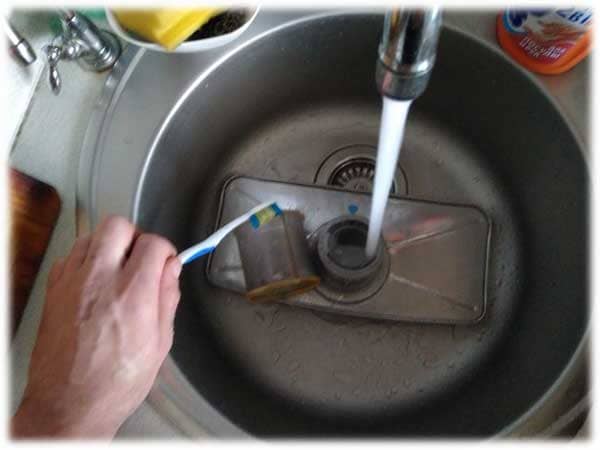
• Now let's check the pump blades, for this we take out the cover that protects them. There are models where it is easily removed by pressing it until it clicks and pulling it up, while I need to unscrew one hex head screw, on some there may be two.
• This is what the protective cover of the pump blades looks like.
• Check the pump impeller to make sure it spins without any snags, remove food debris or other debris.
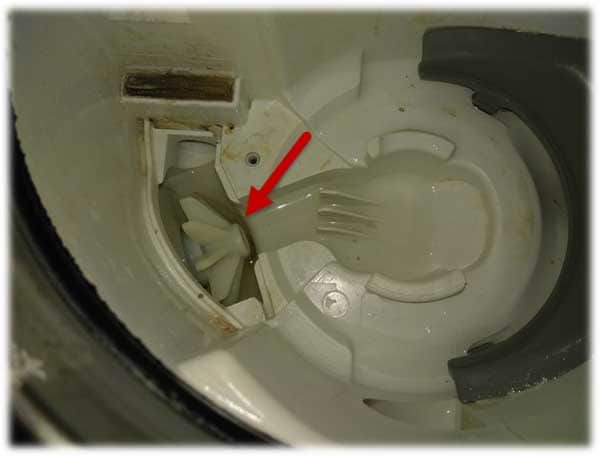
Bosch dishwasher blade cleaning
Since we have already taken up the repair, it will be good to clean the blades at the same time, namely, the holes in them are also clogged with food debris, which sometimes needs to be cleaned in order for the machine to work properly.
We remove the upper blade, for this we twist a special “lamb” half a turn counterclockwise.
Under the pressure of hot water, we clean the holes with an ordinary match or toothpick.
The lower blade is held on by four latches, two on each side, carefully unfasten it by pulling it up, also clean it and put it in place.
Now it is possible to check the result of the work performed. If you don’t know how to reset the remaining time on your model, then just pour a couple of liters of water and then boldly turn on the Bosch dishwasher or any other.
She should pick up the cycle she started earlier and finish it properly by draining the water into the sewer, which will be a successfully completed repair with her own hands.
We watch a video about the advantages of a dishwasher, as well as how to properly load dishes.
«>
How to eliminate the causes yourself
Each of the breakdown options has its own simple solutions, which you can try to cope with on your own. Before starting repairs, you must carefully read the instructions for the machine, and unplug the power cord from the outlet. Then remove the drain hose from the sewer and lower it into a bucket. If the liquid suddenly gushed out in a sharp stream, then the most likely cause of the blockage is a clogged sewer or drain. If the water still remains in the dishwasher, you need to look for the cause further, having previously collected it manually and drained the internal tank.
Drain hose kink. During general cleaning in the apartment and direct care of the unit itself, its location may temporarily change.Therefore, the drain hose can be kinked anywhere and prevent the water from draining freely. You need to carefully inspect it for correct installation and correct the situation.
Sometimes the hose becomes clogged with mechanical debris (bones, solid food particles) and loses its capacity. Then you need to disconnect it from the dishwasher and remove it from the connection to the sewer and rinse it under strong water pressure.
Bad water pressure. If there is poor pressure in the city water supply system, then it will enter the device in insufficient quantities and may cause a general malfunction of the electronic module. The wash cycle will not start correctly and the order of commands may not be correct.
Sewer blockage in the apartment. If the device has a common outlet with a sink and water does not drain well from there, then you need to try to eliminate the mechanical blockage using special chemicals such as "Mole" or a cable to clean the sewer system. Most often, the root cause of poor descent of water in such cases is pipes clogged with plugs from hair, congealed fat or food debris.
A blockage of the general sewer system in an apartment building or a private house will also prevent the direct outflow of water. It is very simple to understand this - not only water from kitchen appliances does not drain, but, in general, everything in the house.
Drain filter clogged. Almost always, users of household appliances neglect the recommendations of manufacturers for operation. The device is not properly maintained and this leads to failure. In the case of using a dishwasher, the manufacturer strongly recommends that cutlery be cleaned from particles of uneaten food before loading. Otherwise, they strongly clog the fine mesh of the internal filter and prevent the waste fluid from draining. This problem is easy enough to deal with. You just need to get a removable filter, clean it under running water and install it back.
Clogged blades are most often caused by poor city water quality. When it is very hard, then the small outlet holes are clogged with limescale and the water flow does not go there. It is necessary to remove the blades, clean them with a toothpick, rinse under a strong stream and insert the impeller back.
Drain pump clogged. When the internal drain is clogged, water remains in the internal reservoir and does not drain through the drain hose. If all of the above measures do not help, then the cause may be in the drain pump. You can find its location by carefully studying the instructions. You should unscrew the protective cover and try to scroll the pump blades with a stick or pencil. When the move is difficult, it is worth trying to remove the foreign object and screw the pump back.
Deciphering the e25 code on the dishwasher display - more details in our article.
Removal of scale and grease
In addition to the remnants of food, which are washed away by water jets when washing dishes, scale and fatty deposits form inside. How to clean the car from this type of deposits?
Proven home remedies that any housewife uses help. They help dissolve lime deposits, grease, and other particles that have contaminated a useful kitchen appliance.
Lemon acid. This proven tool has long been used to remove all kinds of contaminants. It is poured into the machine, the maximum temperature and cycle are set. Upon completion of cleaning, it is necessary to rinse the internal parts again in order to completely remove sufficiently aggressive acid particles.
Lemon juice. Treat stubborn dirt by hand with a cut of fresh fruit, allow time to dissolve the deposits, then rinse with clean water to wash off the lemon juice.
Vinegar cleansing. To clean the internal surfaces, pour half a liter of a natural product into the lower part, set the heating mode, start the process.
In the middle, stop the cycle for about half an hour in case of moderate soiling and for 8-10 hours in case of strong and persistent fat deposits, then restart the machine and wait for it to turn off.
Bleaches are aggressive, but give the highest result - however, at the risk of damaging the dishwasher. Pour 200 ml of product, set the maximum temperature and long cycle, rinse the internal parts with clean water.
To remove mild contaminants, you can use traditional means - Antinakipin, Fairy and others.
-
How to clean suede boots
-
How to choose floor scales
-
How to grow mushrooms at home
-
Home propagation of orchids
-
Face masks with jojoba oil
-
How to humidify the air in the room
